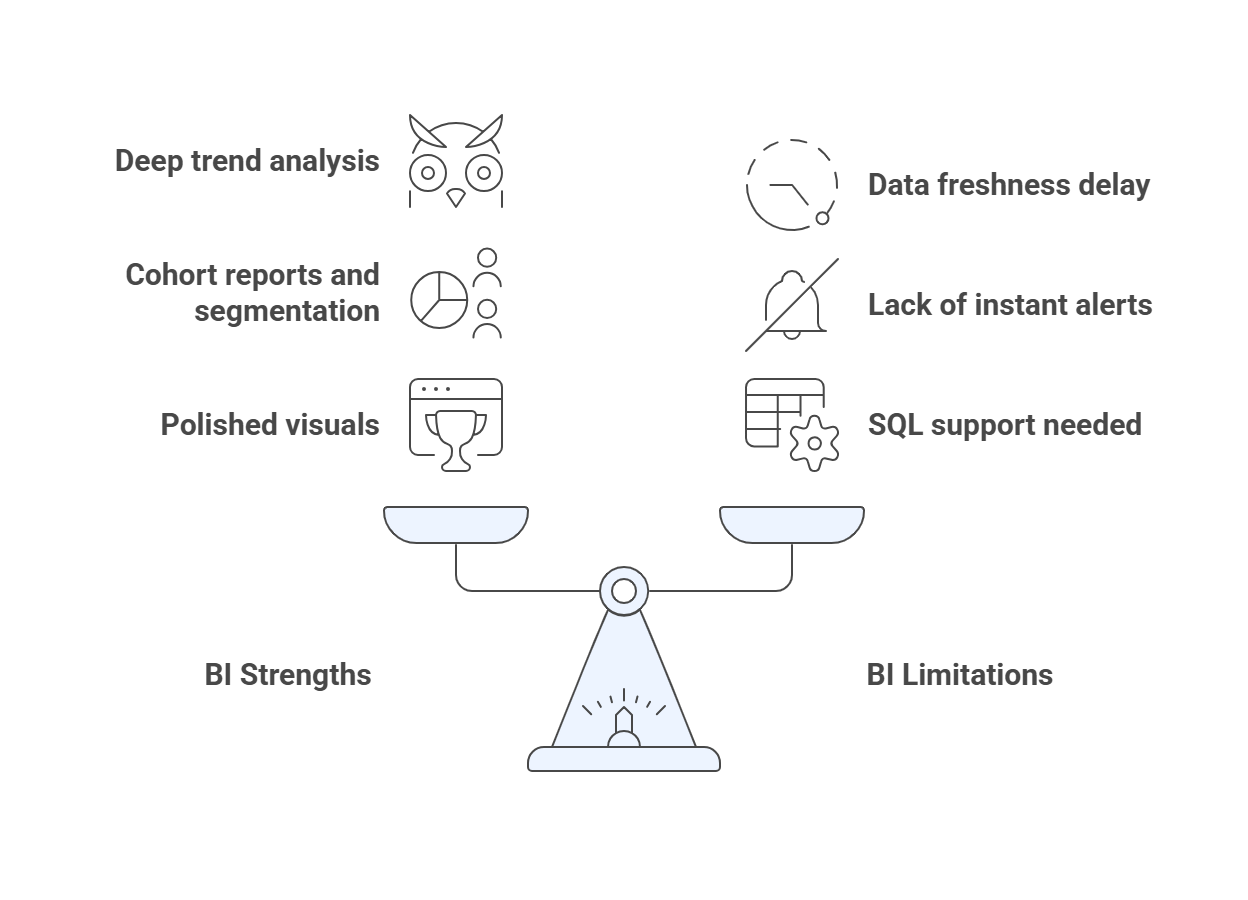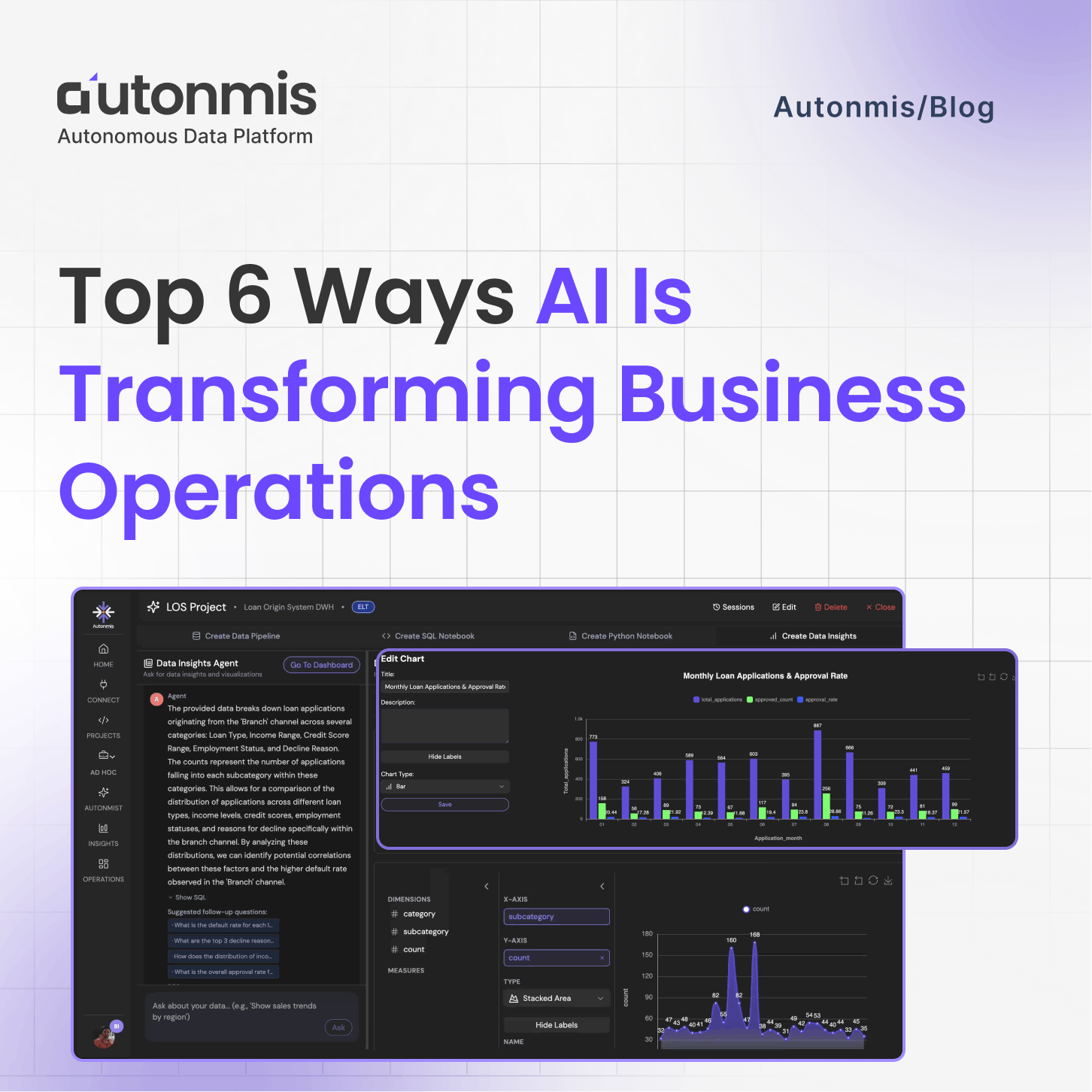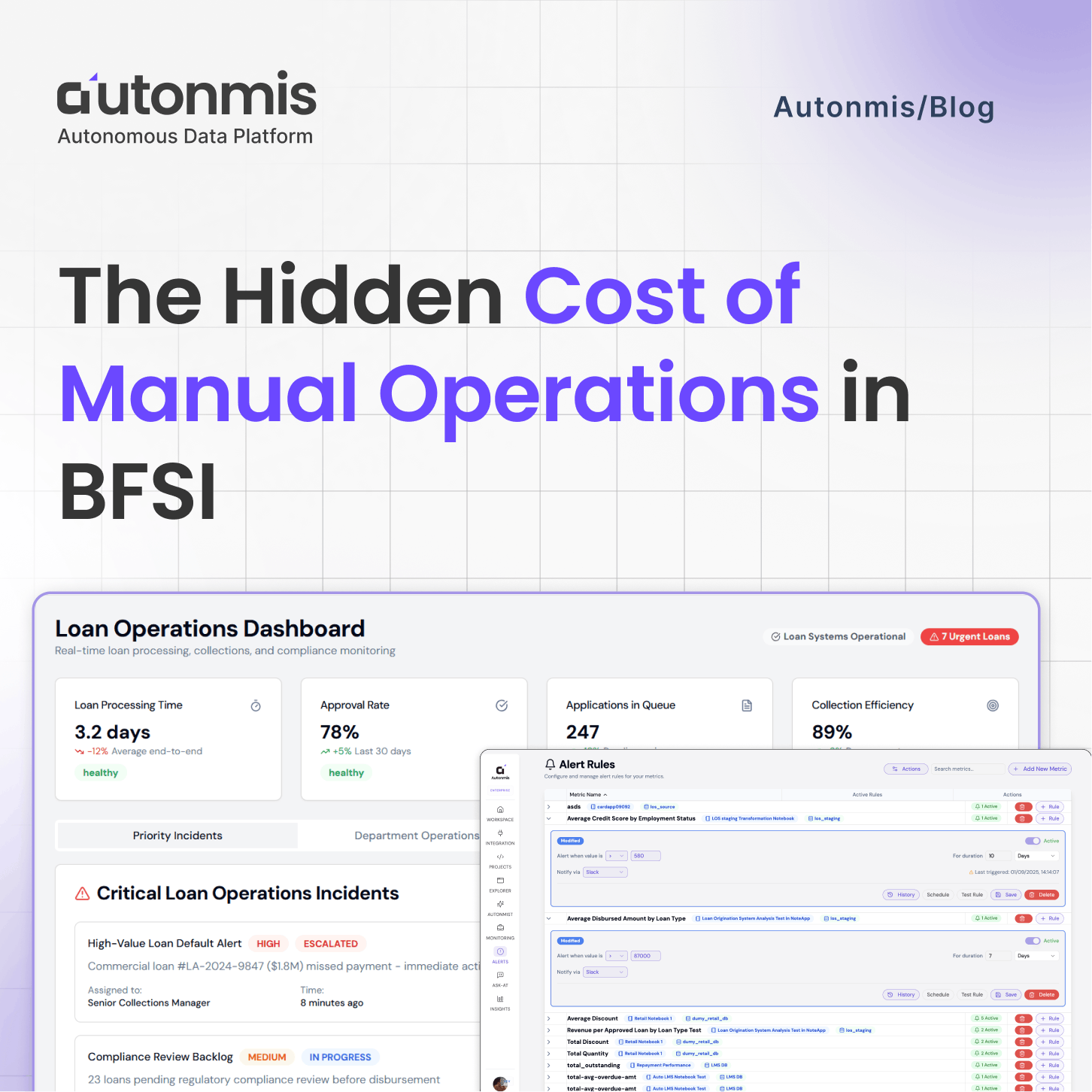8/8/2025

AB
Operational Intelligence vs Business Intelligence: What’s the Difference?
- Business Intelligence (BI) looks backward, turning historical data into strategic insights.
- Operational Intelligence (OI) lives in the moment, surfacing real-time visibility and immediate action on events as they unfold.
- Both are critical: BI for long-term planning, OI for day-to-day agility.

Why This Matters
Imagine this scenario:
Your support queue suddenly spikes at 3 AM. Customers are frustrated. You need to know right now what’s going wrong. Meanwhile, your quarterly strategy review is looming, you’ll want to see trend lines, retention curves, and heat maps to plan the next big feature.
- BI equips you for that strategy review.
- OI keeps your operations team from firefighting in the dark
As a high-level technical leader, you’d like both perspectives in one platform, so your teams don’t waste time switching tools or reinventing the wheel.
What Exactly Is Business Intelligence?
Business Intelligence platform focuses on the past. It’s all about collecting, cleaning, and visualizing historical data - days, weeks, or months old, to answer questions like:
- Which marketing channel drove the most sales last quarter?
- How has churn trended over the past year?
- What’s our three-month rolling average for feature adoption?
Typical BI Flow
- Extract data from databases, CRM, billing systems.
- Transform & Load into a data warehouse.
- Model the data - define tables, metrics, and relationships.
- Visualize with charts and dashboards on a daily or weekly schedule.
- Share reports via email or Slack.
BI Strengths
- Deep trend analysis and forecasting.
- Cohort reports and segmentation.
- Board-ready dashboards with polished visuals.
BI Limitations
- Reports can be hours or days old.
- Not designed for instant alerts or live remediation.
- Often requires SQL or data-engineering support to spin up new queries.

Checkout: How to Improve Operational Efficiency in Fintech
What Exactly Is Operational Intelligence?
Operational Intelligence lives in the moment. It uses streaming or near-real-time data logs, IoT sensors, API calls to drive immediate visibility and action. Think of it as your “live operations control tower.”
Typical OI Flow
- Ingest events continuously (via Kafka, Kinesis, webhooks).
- Process with rules, complex event processing, or ML models.
- Alert or automate actions, trigger notifications, run remediation scripts.
- Visualize on live dashboards that update in seconds.
- Act immediately: reroute orders, restart services, escalate incidents.
OI Strengths
- Instant detection of anomalies or incidents.
- Automated workflows, no human in the loop to initiate basic fixes.
- Real-time KPIs to keep SLAs and uptime on target.
OI Limitations
- Not a replacement for deep historical analysis.
- Can overwhelm teams without good alert rules.
- Often built separately from BI, leading to data silos.

Checkout: What is Operational Visibility in Business?
Side-by-Side Comparison

Why You Need Both
Putting operational intelligence vs business intelligence side by side is like having both a map and a speedometer in your car:
- The map (BI) tells you where you’ve been and where you’re headed.
- The speedometer (OI) tells you how fast you’re going right now, so you can adjust immediately.
Real-World Scenario
A logistics company:
- BI shows that, over the last quarter, Route A has the highest average delivery time.
- OI alerts that today, a traffic accident has blocked a highway on Route A, so the dispatcher can reroute in real time.
Autonmis in Action: Bridging BI & OI
- No-Code Batch & Event-Triggered Pipelines
Build and schedule ETL/ELT flows from databases, SaaS apps, and flat files, no SQL required. - Hybrid SQL & Python Notebooks
Combine SQL queries and Python scripts in one canvas. Prototype analyses, then drag your charts into dashboards. - Scheduled Reports & Real-Time Alerts
Automate weekly or daily reports with cron or event triggers. Define rule-based alerts to notify teams via email, Slack, or in-app messages. - Embedded AI Assistant
Use our AI Copilot to autocomplete queries, suggest transformations, or scaffold entire analyses from plain-language prompts. - Interactive Data Portals
Create “control towers” with filters, selectors, charts, and tables - empowering ops teams to monitor and act without writing code.
“With Autonmis, our operations team reduced incident resolution time by 40%, while our strategy team shaved off 20 hours per month in report prep.”
7. Use Cases That Illustrate the Gap
Field Service Ops
BI: Quarterly summary of ticket volumes, average resolution time.
OI: Real-time view of on-site delays by region, triggering re-dispatch automatically.
E-commerce Fulfillment
BI: Trend analysis on return rates, margin impact.
OI: Live stock-out alerts and dynamic rerouting of orders.
Growth & Marketing
BI: Attribution across paid channels, LTV/CAC modeling.
OI: Immediate signal when a campaign’s CPL spikes - adjust budgets on the fly.
8. Crafting Your Data Strategy
Map Your Needs
List the decisions you make daily (OI) versus monthly/quarterly (BI).
Audit Your Stack
Do you have siloed dashboards? Are your ETL pipelines batch-only?
Build a Unified Foundation
Choose tools that support both historical and streaming data, with shared logic and governance.
Empower Non-Technical Teams
Democratize access: low-code builders for ops, AI assistants for business users.
Iterate & Integrate
Start small: pilot one OI control tower and one BI report, then converge them.

Checkout: How to Improve Business Operations: A Practical Guide
9. Conclusion: From Insight to Action
Business Intelligence and Operational Intelligence are two sides of the same coin. BI lays the strategic groundwork, and OI keeps the engine humming in real time. Technical leaders who master both will unlock:
- Greater Agility: Faster incident response, dynamic resource allocation.
- Deeper Insights: Continuous feedback loops between strategy and execution.
- Empowered Teams: Non-technical stakeholders can explore data, trigger workflows, and get answers - autonomously.
Ready to unify your BI and OI capabilities? Explore how Autonmis can streamline your data operations at autonmis.com.
Recommended Learning Articles

10/23/2025
Top 6 Ways AI Is Transforming Business Operations

9/22/2025

AB
The Hidden Cost of Manual Operations in BFSI
Actionable Operational Excellence
Autonmis helps modern teams own their entire operations and data workflow — fast, simple, and cost-effective.